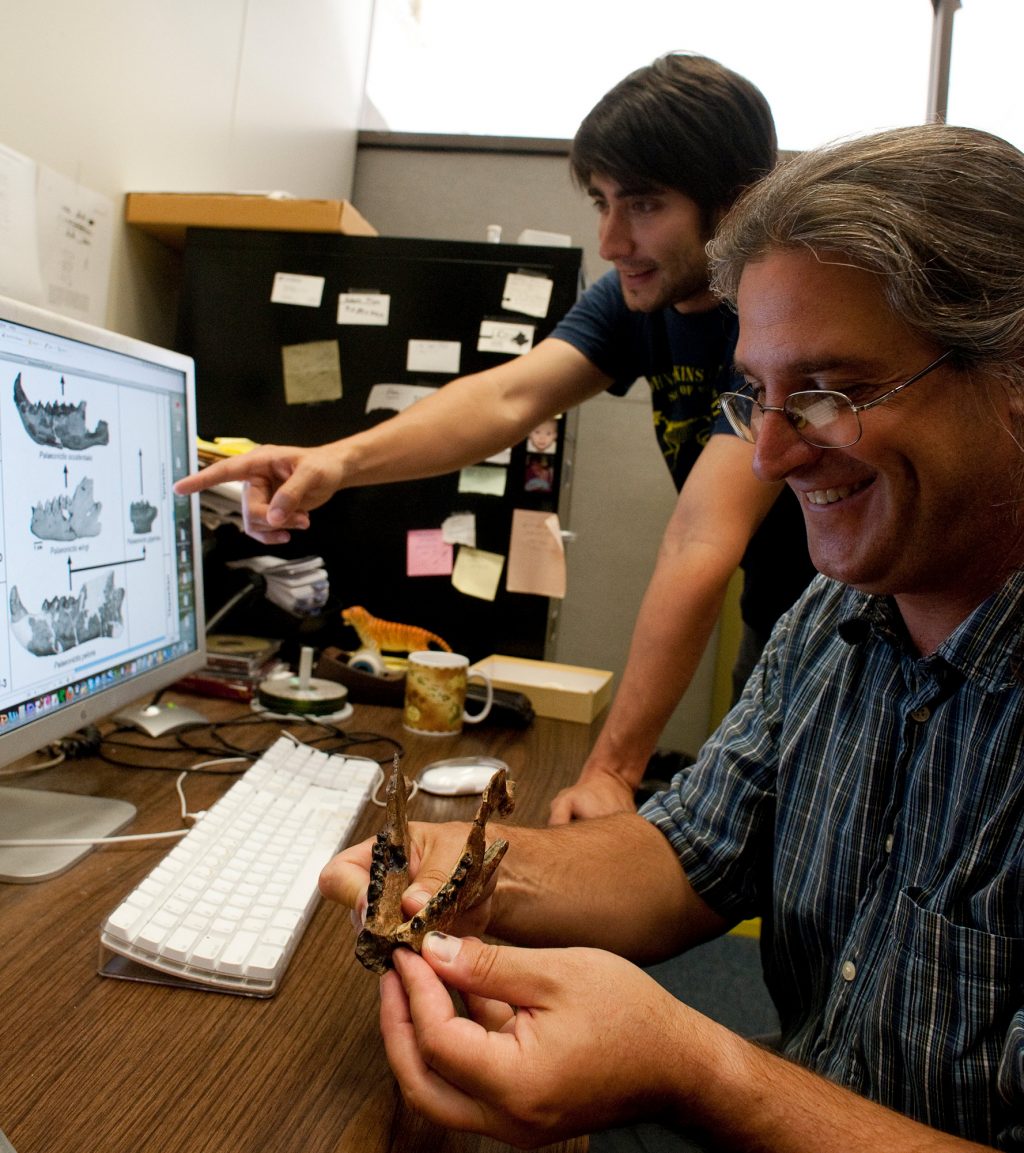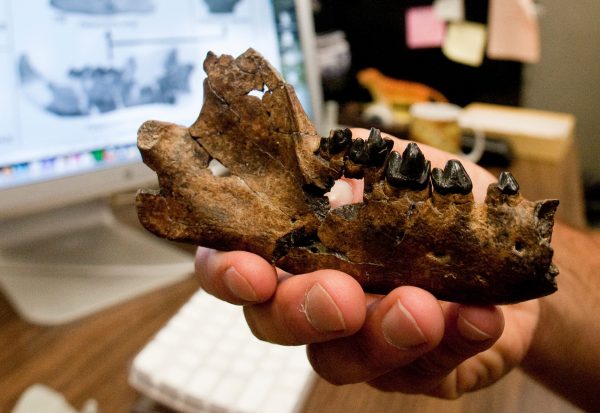About 55 million years ago, a warming event that swept the globe had a profound effect on mammals.
A Florida Museum of Natural History study in the December 2010 print edition of the Journal of Mammalian Evolution describes a new species of carnivorous mammal that shrank to about half the size of its ancestors during a 200,000-year global warming period.
“We know that plant-eating mammals got smaller during the earliest Eocene when global warming occurred, possibly associated with elevated levels of carbon dioxide,” said lead author Stephen Chester, a Yale University doctoral student who began the research at the Florida Museum with vertebrate paleontology curator Jonathan Bloch. “Surprisingly, this study shows that the same thing happened in some carnivores, suggesting that other factors may have played a critical role in their evolution.”
Bloch said the findings from this study could help researchers better understand the impact of global warming today.
“Documenting the impact of global climate change in the past is one of the only real experiments that can inform us about the effects global warming might have on mammals in the near future,” said Bloch, who has studied this climate change event for nearly a decade.
The new species
During a fossil-collecting expedition in Wyoming’s Bighorn Basin in 2006, a team led by Bloch discovered a nearly complete jaw from this extinct, hyena-like animal.

Florida Museum photo by Jennifer Duerden
The new species, Palaeonictis wingi, lived during a period called the Paleocene Eocene Thermal Maximum. During this time, Earth’s average temperature was 15 degrees Fahrenheit higher than it is today. There were also higher levels of carbon dioxide in the atmosphere.
This animal belongs to an extinct group called palaeonictine creodonts, which are characterized by heavy jaws with blunt, cusped teeth and robust bodies. The ancestor of Palaeonictis wingi was the size of a bear, whereas Palaeonictis wingi decreased to the size of a coyote during the Paleocene Eocene Thermal Maximum.
Bloch said a tooth from the new carnivore was described in a paper about 20 years ago, but scientists did not have enough information to name the new species until finding the jaw in 2006.
The new species was named after Scott Wing, a paleobotanist at the Smithsonian National Museum of Natural History. He studies the impact the global warming event had on forests and has played an important role in the collaborative research in the Bighorn Basin, Bloch said.
Shrinking theories
Researchers have been investigating which selective factors caused animals to shrink during this global warming period. Several theories have been proposed, and the discovery of Palaeonictis wingi provides new information that allows scientists to assess these ideas.
According to one theory, carbon dioxide reduced plant nutrients, causing plant-eating animals to become smaller. However, the newly described species mainly consumed meat, meaning plant nutrient levels could not have been the only factor causing animals to shrink.

Florida Museum photo by Jennifer Duerden
Another theory, called Bergmann’s rule, suggests that mammals in warmer climates tend to be smaller than closely related mammals in colder climates, Chester said. For example, Brown Bears in Montana are generally smaller than those found in Alaska. Therefore, researchers would expect animals to decrease in body size if temperatures increase significantly.
Recent studies have suggested that the Bighorn Basin experienced high levels of aridity in the beginning of this global warming period. The lack of precipitation would have made food scarce, and mammals like Palaeonictis may have decreased body size in response to the shortage of resources.
In addition to temperature and aridity directly causing a body size decrease in mammals during this warming interval, it has also been suggested that carnivorous mammals may have decreased in size because of a decrease in the size of their prey.